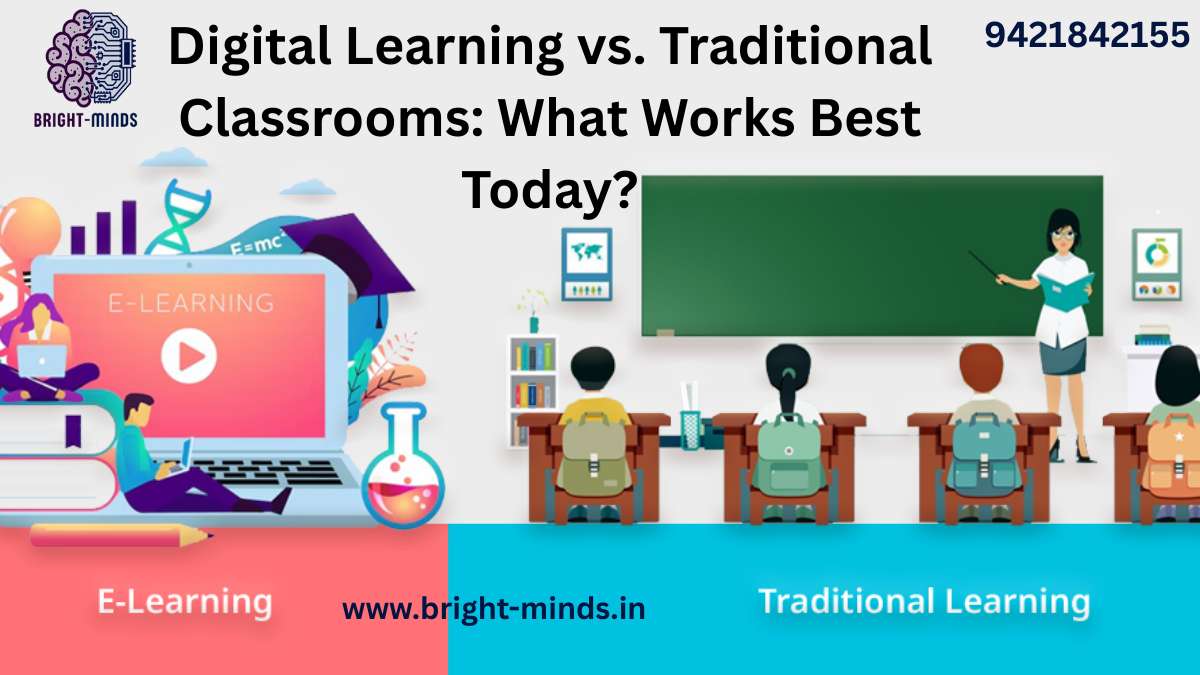In a world where you can learn calculus on YouTube, practice Spanish through an app, or earn a degree from your couch, one question keeps coming up:
“Is digital learning better than traditional classroom education?”
Whether you’re a parent, student, working professional, or company leader trying to provide the best training for your team—this debate affects you.
Let’s dive into the essentials of digital vs. traditional learning, exploring what’s changed, what still works, and how you can make informed decisions for yourself or your organization.
🔍 What’s the Big Shift in Learning?
The last decade—especially post-2020—has revolutionized education. According to HolonIQ, the global EdTech market is expected to exceed $400 billion by 2025, up from $227 billion in 2020.
Why? Because learners now want:
- Flexibility
- Personalization
- Real-world relevance
- Affordable and accessible options
And digital learning delivers on all these fronts. But does that mean it’s better? Let’s compare.
🎓 Traditional Classrooms: Still a Strong Contender
✅ Pros of Traditional Learning
- Structured Environment: Routine and discipline help many students stay on track.
- Face-to-Face Interaction: Builds communication skills and emotional intelligence.
- Instant Feedback: Teachers can immediately address confusion or misbehavior.
- Hands-on Activities: Great for subjects that require labs, group work, or physical learning.
❌ Limitations
- Fixed schedule and location
- One-size-fits-all approach
- Limited access to global resources
- Often more expensive (especially higher education)
💻 Digital Learning: The New-Age Disruptor
✅ Pros of Digital Learning
- Anytime, Anywhere Access: Learn at your pace from your preferred place.
- Custom Learning Paths: AI-driven platforms like Coursera or Khan Academy adjust to your level.
- Scalable and Affordable: One course can reach millions—driving down cost per learner.
- Global Collaboration: Learn with peers from around the world.
Real-world example: Employees at a multinational firm used online micro-courses to upskill in data analysis, saving time and reducing training costs by 50%.
❌ Challenges
- Lack of social interaction (though virtual groups help)
- Requires strong self-motivation
- Screen fatigue and distractions
- Not ideal for all subjects (like performing arts or hands-on training)
🧠 So, What Works Best Today?
Here’s the honest answer: It depends on the learner, the subject, and the goal.
For example:
| Learner Type | Best Format |
| Self-driven, tech-comfortable learner | Digital |
| Younger students needing structure | Traditional or hybrid |
| Working professionals with limited time | Digital (short-form/micro-learning) |
| Hands-on skill training (e.g., carpentry, chemistry) | Traditional with some digital supplementation |
What’s clear is this: Hybrid learning models are emerging as the gold standard—combining the strengths of both worlds.
💼 What This Means for Parents and Companies
👪 For Parents:
- Digital platforms can reinforce classroom learning at home (e.g., using Khan Academy for math practice).
- Monitor screen time, but don’t avoid it entirely—guide kids to use it productively.
- Encourage blended learning: A mix of books, physical activity, and digital exploration.
🏢 For Companies:
- Digital learning is cost-effective, scalable, and trackable.
- Offer access to curated e-learning platforms for employee growth.
- Promote a culture of continuous learning through digital certifications and LMS tools.
✨ Practical Tips to Make the Most of Either Method
For Digital Learners:
- Use time-blocking to schedule learning
- Join online communities or forums for social interaction
- Take regular breaks to avoid screen fatigue
For Traditional Learners:
- Supplement classes with online videos or simulations
- Use digital flashcards and quiz apps for revision
- Review classroom notes with online tools like Google Classroom
💬 A Balanced Perspective
There’s no “winner” in this debate. The real win lies in understanding that learning is no longer limited by walls or timetables. It’s dynamic, adaptable, and increasingly learner-focused.
“Education is not the filling of a pail, but the lighting of a fire.” – William Butler Yeats
Whether it’s digital or traditional, the key is to ignite curiosity and equip learners with relevant, lifelong skills.
you may be interested in this blog here:-
Numeracy Skills for Pre-Primary Building a Strong Foundation
Learning Geography with Maps: A Kid’s Adventure Around the World

